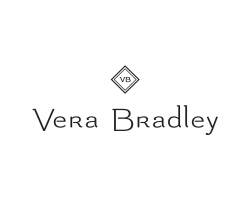One of the most critical commands you can teach your dog is to come when called. Whether you're in the park, at home, or in a potentially dangerous situation, having your dog respond promptly to your call can be a lifesaver. However, training a dog to come when called isn't always as straightforward as it sounds. It requires patience, consistency, and effective techniques. In this comprehensive guide, we'll walk you through the steps to train your dog to come when called, ensuring a happy and obedient furry companion.
Why Teaching Recall is Important
Before delving into the training process, let's understand why teaching your dog to come when called is crucial:
1. Safety: The ability to recall your dog is vital for their safety. It can prevent accidents, keep them out of dangerous situations, and help you regain control if they're heading towards trouble.
2. Off-Leash Freedom: A well-trained recall allows your dog to enjoy off-leash freedom in secure areas like parks and beaches, where they can exercise and socialize.
3. Bonding: Training your dog strengthens the bond between you and your furry friend. It fosters trust and communication.
4. Behavioral Control: A strong recall can be used to redirect your dog's behavior and prevent unwanted actions, such as chasing cars or other animals.
Training Steps for Recall
Now, let's dive into the step-by-step process of training your dog to come when called:
Choose a Distinct Recall Command
Select a word or phrase that will serve as your recall command. Common choices include "come," "here," or "recall." Be consistent with your choice and ensure everyone in your household uses the same command.
Use Positive Reinforcement
Positive reinforcement is the foundation of dog training. When your dog comes to you as instructed, reward them with praise, treats, or affection. Make coming to you a rewarding experience.
Start Indoors in a Controlled Environment
Begin training in a quiet, indoor space where there are minimal distractions. Attach a leash to your dog's collar for added control.
Associate the Command with a Reward
Say your chosen recall command (e.g., "come") in an upbeat tone and immediately reward your dog with a treat or affection when they come to you. Use high-value treats to motivate them.
Practice Short Distances
Start with short distances and gradually increase the distance as your dog becomes more reliable. Practice in different rooms of your home.
Add Distractions Slowly
Once your dog responds consistently indoors, gradually introduce mild distractions, such as toys or mild noises. Continue to reward them for coming when called.
Move to Outdoor Training
When your dog reliably responds indoors, move your training sessions to a securely fenced outdoor area, like your backyard. Begin with low distractions and gradually add more challenging elements.
Use a Long Line or Leash
In the early stages of outdoor training, use a long training leash (20-30 feet) to maintain control. This allows you to gently guide your dog if they don't respond immediately.
Practice Real-Life Scenarios
Training your dog to come when called in real-life scenarios is essential. Practice in different environments, such as parks, while on walks, and during playdates with other dogs.
Maintain Consistency
Consistency is key to successful recall training. Always use the same command and reward system. Avoid calling your dog for negative experiences, such as baths or reprimands.
Gradually Reduce Treats
As your dog becomes more reliable with recall, gradually reduce the frequency of treats but continue to reward them occasionally to reinforce the behavior.
Use Positive Corrections
If your dog doesn't respond immediately, avoid scolding or punishing them. Instead, use positive corrections, such as clapping your hands or making cheerful noises to get their attention.
Practice Emergency Recall
Teach your dog a specific recall command for emergency situations. This command should be reserved for critical moments and rewarded generously.
Proofing the Recall
Proofing means ensuring your dog's recall is reliable in all situations. Continue to practice in various environments, with different distractions, and around other people and dogs.
Seek Professional Help if Needed
If you're struggling with recall training, consider enlisting the help of a professional dog trainer or behaviorist. They can provide specialized guidance and techniques.
Common Mistakes to Avoid
To ensure successful recall training, avoid these common mistakes:
1. Inconsistent Commands: Stick to one recall command and use it consistently.
2. Lack of Positive Reinforcement: Always reward your dog for coming when called, even if it took them a while.
3. Punishment for Non-Compliance: Never punish your dog for not coming when called; it will create a negative association with the command.
4. Skipping Early Stages: Don't rush outdoor training or skip the indoor and controlled environment stages.
5. Overuse of the Recall Command: Avoid calling your dog unnecessarily; this can lead to them ignoring the command.
6. Ignoring Distractions: Gradually introduce distractions rather than exposing your dog to overwhelming situations.
Teaching your dog to come when called is an essential skill that enhances their safety and your relationship. With patience, consistency, and positive reinforcement, you can train your furry companion to respond reliably to your recall command. Remember that every dog is unique, and training progress may vary. Celebrate small victories and be patient with your dog throughout the process. The effort you invest in recall training will pay off with a happier, safer, and more obedient canine companion.

.jpg)
.jpg)






 English (US) ·
English (US) ·